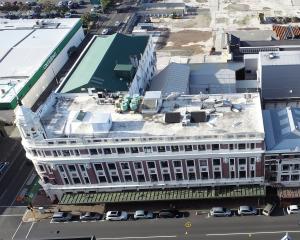Vocal folds - or cords - vibrate so quickly their movement is invisible to the naked eye, but the new stroboscopy equipment can capture that movement in slow motion and freeze-frame.
Dunedin Hospital ear, nose and throat surgeon Dean Ruske said the stroboscope allowed for finer diagnosis of small lesions on the vocal cords and helped with the treatment of vocal problems.
Head and neck cancers, vocal nodules and swallowing disorders are some things the stroboscope can help diagnose.
The equipment enabled specialists to document information in stills or video to see if treatment was making any progress.
A tiny camera on the end of a rigid or flexible device goes into the patient's mouth or nose to give a view of their throat and vocal cords. Images from the camera are projected on to a screen so patients can also see what is happening in their voice box.
Speech and language therapist Vanessa Jerome said some therapy could be tried while the camera was in the patient's throat to see what did and did not work.
Research in the United Kingdom had demonstrated the equipment could cut down the time needed for therapy.












